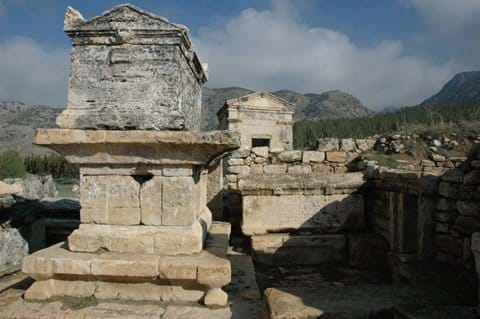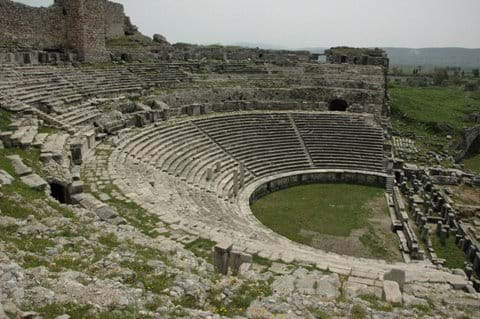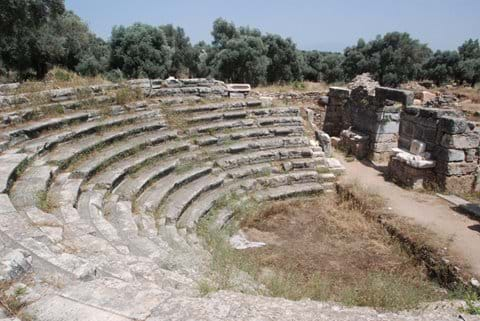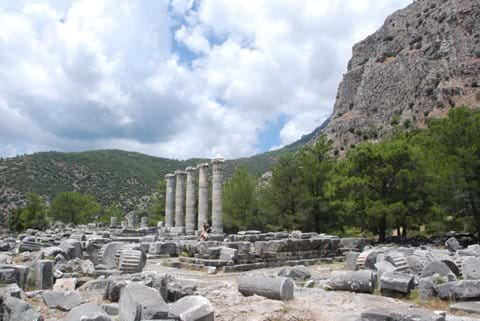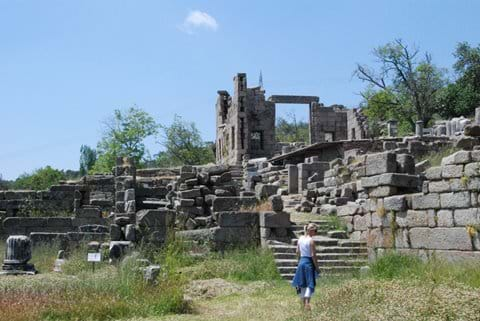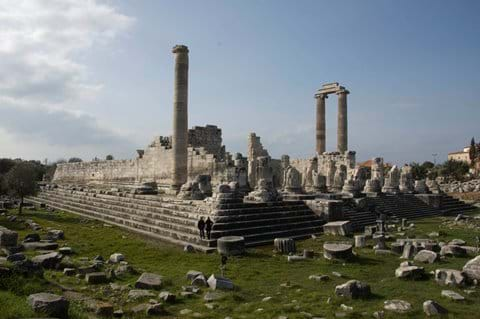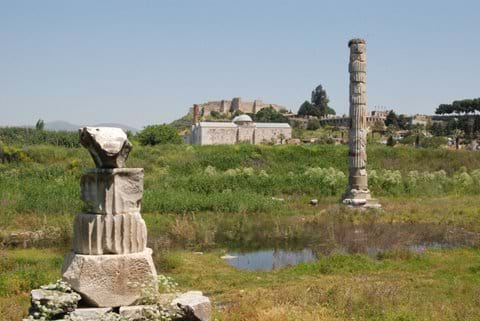Archaeological sites
The western part of Anatolia, the southeastern corner of Turkey, possesses many of the most spectacular classical archaeological sites in the Mediterranean, representing the pinnacle of the architectural achievements of the Greco-Roman world. The degree of preservation of many of these sites is unparalleled and provide an unforgettable impression of this period of history.
Selcuk makes an excellent base from which to explore these sites, nearly all being within a couple of hours drive. The following pages are aimed at giving a taste of what each site has to offer. We still have many to visit and are constantly updating, so not all these accounts have been completed. The best are described below. If you are looking for a guide book, then you cannot beat 'Ancient Civilisations and Ruins of Turkey' written by Ekrem Urgal, now in its 10th edition.
Aphrodisias
What has to be one of the finest sites in this part of Turkey. The stadium alone is worth the visit, being almost totally intact. However, the high point has to be the museum packed with the sculptures excavated from the site.
Claros
A small site, but worth the visit to see the Temple of Apollo and the cellar beneath the temple where it's famous oracle presided. One can recapture a sense of the atmosphere of the mysteries surrounding prophecy.
Didyma
Awe inspiring when one sees the scale of the Didymaion, the temple dedicated to Apollo.
Ephesus
A short paragraph of introduction cannot even begin to do justice to this site. It is another essential place to visit. The Library of Celsius, the amphitheatre and Odeon, are just a few of the numerous structures that will inspire. The Terraced Houses should not be missed, with frescoes, mosaics and marble-lined halls this gives a taste of Roman luxury living rivalling Pompeii.
Euromos
There is little to see here besides the impressive Zeus temple ruins but the fine quality workmanship of the Corinthian capitals and mouldings, as well as the neo-classical character it presents, make it worth a stop.
Hierapolis
This should be part of any itinerary of the major sites. The extensive 'city of the dead' is one of the most impressive in the world. There is much else to see including the amphitheatre, the Roman Baths, a collonaded street and monumental gateway and the Martyrium of St Philip.
Labranda
A well-preserved site situated in mountains that were a sacred to Zeus.
Besides the Temple of Zeus, the other structures are the remains of Royal Palaces and houses reserved for Priests. Fabulous views to the south.
Miletus
One of the oldest and most important sites in Ionia. It was a coastal city with four harbours now lying in the middle of a plain. It is a huge site dominated by the amphitheatre, but there is much else to see including the Agoras, Temples, Baths and much more.
Nysa
Built across a narrow gorge displaying the extraordinary engineering skills of its builders. Much of stadium that straddled the ravine has collapsed, washed away by turbulent waters. It is now a city in two halves. The amphitheatre is well preserved. The library, Agora, Bouleuterion and Roman Baths are essential viewing.
Priene
One of the oldest and finest Hellenistic cities to be found anywhere, in a beautiful setting. A stunning site whose atmosphere recaptures the golden age of Greek civilisation. An essential if you plan to see no others!
Selcuk
Whilst the Artemis Temple can no longer claim to be one of the Seven Wonders of the world, there is much also to see in the town, especially the Museum, St John's Basilica, the aqueduct (including the two-tiered portion built by Pollio just south of town)
All images and text are copyright: Nick Vaughan



